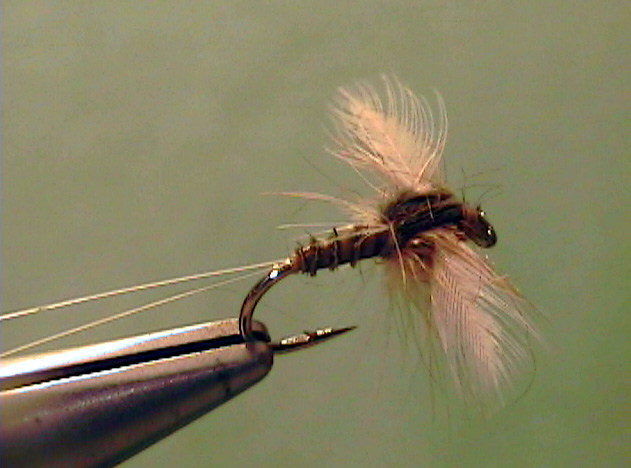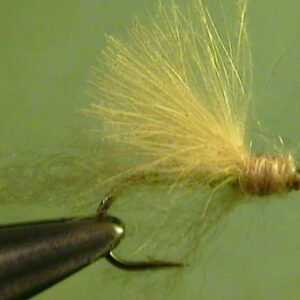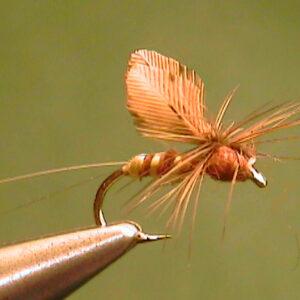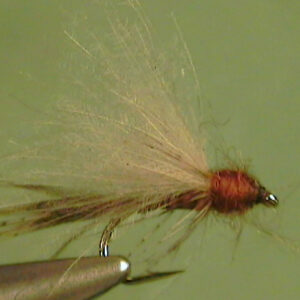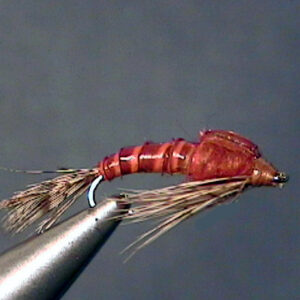Hook Size: 14/16
The Perfect Fly Western March Brown Spinner is a imitation of the spinner stage of life of the mayfly. Once the dun reaches the banks, trees or bushes, it molts into a spinner, or the sexually mature adult. The males and females return to the water and mate in mid air, and eventually fall dead on the surface of the water where trout can easily dine on them. It should be fished on the surface and treated with floatant.
In some cases, the spinners are the most important phase of the Rhithrogena
species, but this depends on a lot of factors, mainly the weather and species, or
time of year the spinner fall occurs. The reason is that the duns hatch off and on
throughout a long period of time but the spinner fall concentrates the mayflies
and it occurs in a much shorter period of time.Calm evenings sometimes produce excellent spinner action. The females usually
lay their eggs over the riffles and runs of the stream but the trout tend to eat
them in areas of the streams where they collect.
species, but this depends on a lot of factors, mainly the weather and species, or
time of year the spinner fall occurs. The reason is that the duns hatch off and on
throughout a long period of time but the spinner fall concentrates the mayflies
and it occurs in a much shorter period of time.Calm evenings sometimes produce excellent spinner action. The females usually
lay their eggs over the riffles and runs of the stream but the trout tend to eat
them in areas of the streams where they collect.
Presentation:
When the spinner fall starts, upstream presentations made in the calmer areas of
pocket water and at the tail end of riffles and runs will usually work best. Slower
moving smooth water may require a down and across presentation using longer
leaders and smaller tippets. At some point the spent spinners will collect in the
eddies, pockets and other similar slow water areas below the runs and riffles.
Imitations will produce if presented in these areas. The down and across
presentation usually works best for this
.
Copyright 2013 James Marsh
